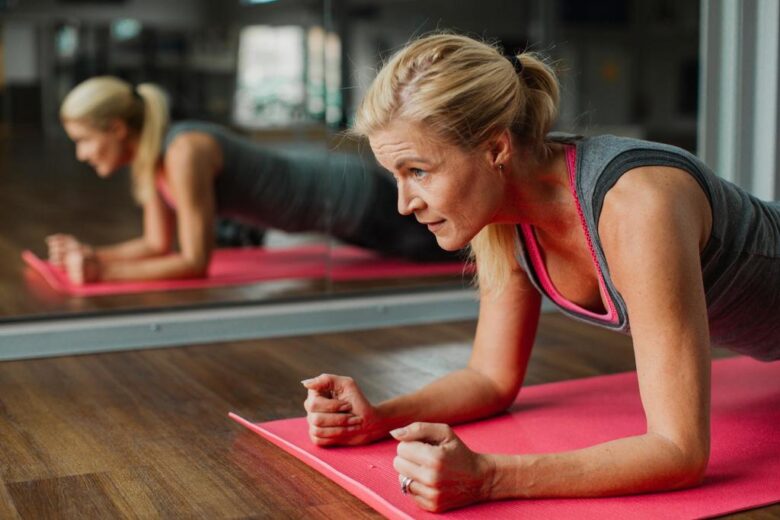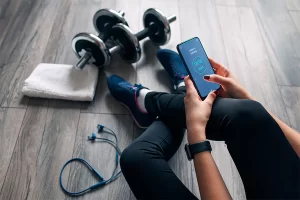If you want to stay fit and healthy, you don’t always need an expensive gym or lots of fancy tools. The body can be a very useful tool in making you stronger, more durable, and healthier. Bodyweight exercises are becoming increasingly popular because they are easy to perform and work well for people of all fitness levels. This article discusses the benefits of bodyweight exercises, gives you some different exercises, and shows you how to create your own personalized bodyweight exercise routine so you can reach your full fitness potential.
1. Benefits of Bodyweight Workouts
- Convenient and accessible: You don’t need a gym membership or special tools to perform bodyweight exercises. You can do these almost anywhere. Whether you’re at home, in the park, or on the road, you can get a good workout in with very little planning.
- Value for money: Regular gym fees and home workout equipment can be expensive. On the other hand, you don’t have to spend money on bodyweight exercises. This makes fitness accessible to a wider range of people and encourages everyone to live a healthy lifestyle.
- Natural and beneficial movement patterns: Bodyweight exercises often look like natural, beneficial movements. This makes your overall coordination and mobility better, meaning you can perform your daily tasks better. Functional fitness isn’t just about how you look; It’s also about how you move and how you feel in general.
- Scalability: Bodyweight exercises can be performed by anyone, regardless of their fitness level. Whether you’re new to fitness or have been doing it for a long time, every exercise can be changed and improved. This ability to change means you can push yourself as you learn.
- Total Body Engagement: Many bodyweight exercises work for multiple muscle groups at once, which is good for a well-rounded fitness program. Compound movements not only save time, they also make you stronger and better at coordinating your movements.
2. Bodyweight Exercises
- Squats: When you do a squat, start with your feet shoulder-width apart. Bend your knees to lower yourself and then push your hips back as if you were sitting in a chair. Lower your body until your legs are straight away from your body. Keep your chest high. To return to the starting point, push with your heels.
- Push-Ups: When you do push-ups, stand straight with your hands shoulder-width apart. Bend your arms and lower your body until your chest almost touches the floor. Then push yourself back to the starting position. Keep your body straight from head to toe during the movement.
- Lunges: To perform a lunge, step forward with one foot and lower your body until both knees are bent at 90 degrees. The back knee should be just above the ground. Start again with your front foot and repeat with the other leg.
- Plank: Start in a forearm plank position. Make sure your body is straight from head to toe. Focus on your core and hold this pose for as long as possible. Make sure your butt doesn’t hit the floor.
- Burpees: To do burpees, stand up, then bend over and place your hands on the floor. To complete this move, jump your feet back into a plank position, perform a push-up, then jump your feet back to your hands and quickly come up.
3. Create a Bodyweight Exercise Plan
- Set clear goals: Write down your training goals, such as losing weight, building muscle, or getting stronger. Your goals determine how difficult, how long, and how often you perform the basic exercises.
- Warm-up: Start with an active warm-up to prepare your muscles, increase blood flow, and reduce the risk of injury. Perform exercises such as high knee raises, jumping jacks, and arm circles.
- Choose your exercises carefully: Choose a range of activities that suit different muscle groups. To develop a well-rounded workout routine, do both strength training and cardio. Depending on your training level, you can add variations and progressions.
- Create a routine: make sure everything stays the same. It’s important to make a plan that works for your daily life. Make it a habit to exercise every day, whether in the morning or after work.
- Pay attention to your body: Pay close attention to how your daily activities make your body feel. If you feel pain (which is different from discomfort), change or skip certain movements. Rest is very important to recover.
Conclusion
Ultimately, starting bodyweight exercises is the first step toward easily achievable long-term fitness goals. These exercises are great for people who want to improve their overall health because they are easy to do, can be scaled up, and involve the whole body. You can improve your strength, endurance, and functional fitness by creating a training program that includes a range of bodyweight exercises. It’s important to have clear goals and stick to them, and to pay attention to your body’s signals. Whether you’re a seasoned fitness enthusiast or just starting, bodyweight exercises can help you reach your full potential and stay healthy in the long term, without the need for expensive equipment or restrictive environments. Accept how simple it is, enjoy the process, and watch how it changes your health and life for the better.
FAQs
1. Can exercising with your own body replace going to the gym?
Yes, bodyweight exercises are a great and easy way to exercise instead of going to the gym. They can be adapted to people of all fitness levels and work the entire body to build strength and endurance.
2. Can beginners train with their own body?
Certainly! Bodyweight exercises can be adapted to any fitness level, so even beginners can perform them. Start with basic exercises and progress to more difficult exercises as your fitness and strength improve.
3. How long should exercising with your own body take?
How long bodyweight exercises last depends on your fitness level and goals. A complete workout (including warm-up and cool-down) takes 20 to 45 minutes.
4. Can exercising with your own body help you lose weight?
Yes, exercising for your body can help you lose weight by burning more calories and making you healthier overall. For best results, take it with a healthy diet.
5. What should I do if I have an injury or joint problem?
If you have joint pain or injury, you can often adjust the way you perform bodyweight exercises. However, it’s important to consult a doctor or exercise professional to make sure your exercise program is safe and effective.
6. Will exercising your body make you stronger?
Certainly. Squats, push-ups, and lunges are all exercises you can do with your body. You can add progression and variety to keep it interesting and continue to build muscle.



